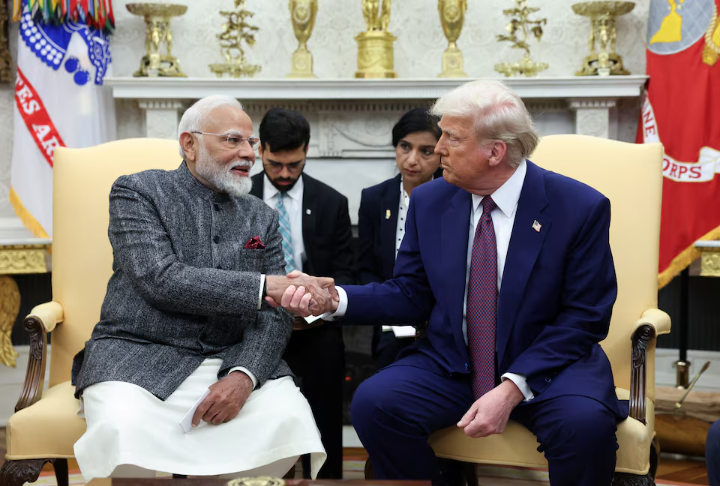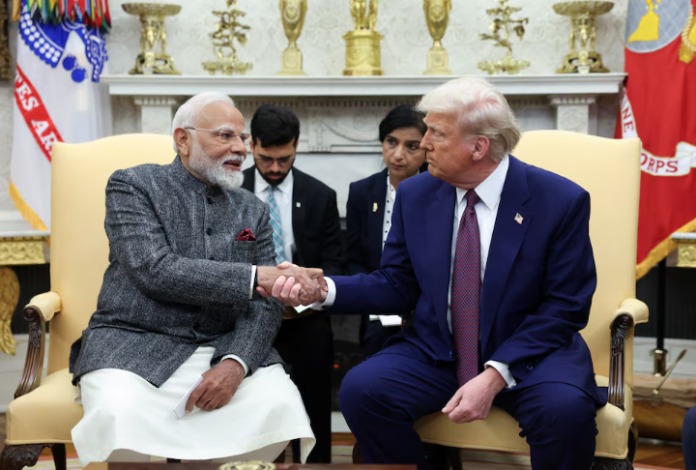India and the United States have agreed to initiate negotiations aimed at resolving trade tensions and easing tariff restrictions. Following a high-level meeting between U.S. President Donald Trump and Indian Prime Minister Narendra Modi at the White House, both nations have committed to working toward a fairer trade deal, expanding economic cooperation, and addressing key geopolitical concerns.
Key Outcomes of the Meeting
- Trade Talks to Begin Soon
India and the U.S. will kick-start negotiations for an early trade agreement, with the first phase expected to be finalized by fall 2025. The aim is to eliminate trade barriers and create a more balanced exchange of goods and services between the two economies. - India to Boost U.S. Energy Purchases
As part of efforts to reduce trade imbalances, India has pledged to increase its energy imports from the U.S. from $15 billion to $25 billion. This move is expected to strengthen the economic partnership between both nations while enhancing India’s energy security. - Commitment to National Interests
President Trump reiterated his stance on reciprocal tariffs, emphasizing that the U.S. will match India’s import duties. Despite this, both leaders expressed a commitment to protecting their respective national interests while striving for fairer trade terms. - Strengthening Defense and Security Cooperation
India is looking to expand its defense procurement from the U.S., with the potential purchase of F-35 stealth fighter jets being discussed. However, Indian Foreign Secretary Vikram Misri clarified that the deal is still at the proposal stage, with no formal agreements in place yet. - Joint Efforts to Curb Illegal Immigration
Both countries agreed to intensify efforts in tackling illegal immigration and human trafficking. India remains a significant source of U.S. immigrants, particularly in the technology sector, and both governments are keen on addressing unauthorized migration effectively. - Countering China’s Influence
The leaders also discussed strengthening security collaboration in the Indo-Pacific region, a move widely seen as countering China’s growing influence. This includes joint efforts in technological advancements, such as artificial intelligence, as well as deeper military cooperation.
Trade Disputes and Future Prospects
Despite strong diplomatic ties, trade disagreements have persisted between the two nations, particularly regarding tariffs. Trump has long criticized India’s high import duties on American goods, calling them “unfair.” However, Modi emphasized that India’s trade policies prioritize national interests, mirroring Trump’s “America First” approach.

India has also maintained its economic ties with Russia, continuing to import Russian energy despite global sanctions following the Ukraine war. Modi reassured that India’s foreign policy remains driven by the principles of peace and stability.
The negotiations between India and the U.S. mark a significant step toward resolving long-standing trade conflicts. If successful, these agreements could pave the way for a stronger economic alliance, benefiting industries ranging from agriculture and defense to energy and technology.
Conclusion
The latest developments signal a promising shift in U.S.-India relations. With plans to finalize initial trade agreements by late 2025, both nations are set to foster stronger economic ties while addressing global challenges. Whether this translates into a long-term resolution of trade disputes remains to be seen, but the renewed dialogue offers hope for a more stable and cooperative partnership.



